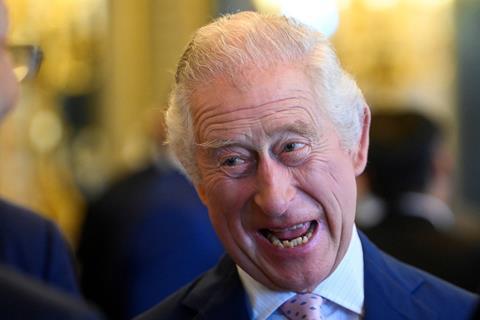From sleeping monarchs to rancid anointing oil, past coronations have not always been straightforward. Ian Bradley looks back at a litany of errors

Although they have generally been solemn and dignified affairs in keeping with their prime function as Christian services of worship, British coronations have sometimes been marred by misdemeanours and mishaps.
Not all monarchs have taken their coronations as seriously as they should. St Dunstan, the abbot of Glastonbury, was appalled by the behaviour of the Anglo-Saxon King Eadwig immediately after being crowned and anointed at Kingston upon Thames in 955. The abbot noted that "the lustful man suddenly jumped up and left the happy banquet and the fitting company of his nobles for the caresses of loose women". Dunstan and another cleric were sent to drag the king back to the ceremony. When they entered his apartments, they found the royal crown carelessly thrown on the floor and the king wallowing between two ladies "in evil fashion, as if in a vile sty". He was reluctant to leave but Dunstan "after first rebuking the folly of the women, drew him by the hand from his licentious reclining, replaced the crown, and brought him to the royal assembly, though dragged from the women by force".
King John displayed "unseemly levity" throughout his coronation in Westminster Abbey 1199 and refused to take communion. Richard II fell asleep halfway through the service in which he was crowned in 1377, although as he was only ten years old his exhaustion is understandable. George IV nodded and winked to his mistress, Lady Conyngham, throughout his coronation and Edward VII installed his lady friends in a gallery which was dubbed the "King’s loose box".
Several coronations have been marred by disasters and mishaps which were not the fault of the monarch. During the crowning of William the Conqueror on Christmas Day 1066 the Norman cavalry outside Westminster Abbey mistook the shout of acclamation inside for a riot and proceeded to massacre a group of Saxons who had the misfortune to be in the vicinity.
The oil used to anoint Elizabeth I in 1559 was rancid and had a foul smell, and during James II’s coronation in 1685 the crown would not stay firmly on the king’s head.
The Archbishop of Canterbury made a mess of delivering the orb to the Queen and shoved her ring on to the wrong finger, causing considerable delay and much pain
George III’s coronation in 1761 was a raucous and chaotic affair which lasted five hours. Copious refreshments were provided and several of those present chose to eat their lunch noisily during the anointing. Chairs for the king and queen and a canopy to cover them during the anointing failed to be provided, and the Lord Mayor had to offer his own sword as a last minute substitute for the Sword of State which the Earl Marshal had forgotten to bring. When the king was about to receive communion he asked the Archbishop of Canterbury if he should remove his crown. The Archbishop consulted with the Dean and said that they could not recall any precedent as previous monarchs had always taken communion wearing their crowns. "Then there ought to be" George III said, removing his crown. He urged the Queen to do the same but her crown was pinned on to her hair.
MORE ON THE CORONATION OF KING CHARLES III
- Christians should only swear allegiance to Jesus. The coronation oath is not OK
- The Christian message at the heart of the coronation
- Britain has become the defender of all faiths but one
- Why I support the monarchy
- Why I am a republican
- There’s only one king Christians should put their hope in, and it’s not Charles
George IV’s estranged wife, Caroline, was barred from entering Westminster Abbey when she turned up for her husband’s coronation in 1821. Queen Victoria’s coronation was a muddled affair in which the officiating clergy demonstrated particular ineptness. The Archbishop of Canterbury made a mess of delivering the orb to the Queen and shoved her ring on to the wrong finger, causing considerable delay and much pain. When the Queen withdrew to St Edward’s Chapel after the anthem she was upset to find the altar covered with sandwiches and bottles of wine.
George VI also suffered from episcopal incompetence at his coronation in 1937. Neither of the bishops holding the form of service for him to follow could find the right page for the coronation oaths, so the Archbishop of Canterbury held up his copy but covered the words of the oath with his thumb. The king later complained: "I had taken every precaution as I thought to see that the crown was put on the right way round, but the Dean and the Archbishop had been juggling with it so much, that I never did know whether it was right or wrong…As I turned after leaving the Coronation Chair I was brought up all standing, owing to one of the Bishops treading on my robe. I had to tell him to get off it pretty sharply as I nearly fell down."
Let us hope King Charles is spared such clumsiness and that his coronation is dignified and solemn as well as splendid and spectacular in a way that enhances the sacred nature of the monarchy and taps into the latent vein of spiritual awareness in a nation that has stopped going to church but has not completely lost its appreciation of the key Christian values of grace, mercy, justice, sacrifice and forgiveness.


































No comments yet